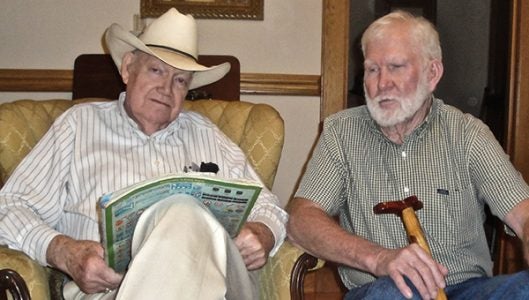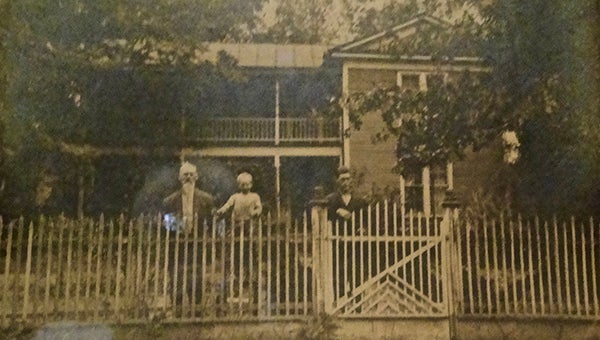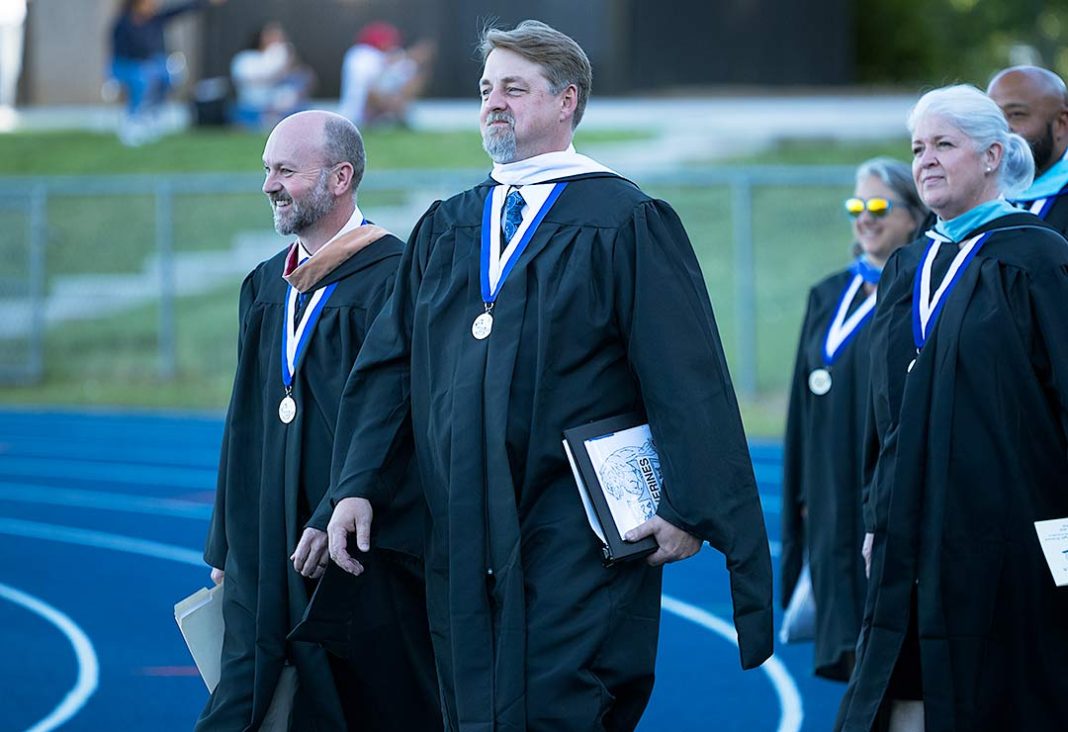The Foster family: The next generation
Published 10:00 pm Monday, September 26, 2016
My last column told the story of Festus Flavius Foster and his family, and the migration of one of his children and grandchildren by covered wagon to California and Texas. After the death of Laura McMillan Foster, the grandchildren returned to South Carolina from New Orleans by train with their Aunt Effie and grew up in Pappy’s house, now called “The Christmas House.” Margaret, one of the grandchildren passed the stories down to her son, D.M. Wolfe, who has now told them to me.
I spent the afternoon with D.M. and his cousin, Hugh Foster, to learn their generation’s intriguing tales. Hugh and D.M. are Pappy’s great grandchildren. D.M.’s mother, Margaret, and Hugh’s father, Crumble Hugh, were the grandchildren that had traveled out west by covered wagon.
I’ll continue with Hugh’s life. Hugh’s father, Crumble Hugh, contracted spinal meningitis when Hugh was a young boy. He remembers that the children were removed from the house and the house was quarantined. Crumble Hugh died at age 37 from the meningitis.
“I was young,” Hugh tells me. “But I do remember that they had to burn everything, the bedding and even the mattress. My Mother didn’t want the three of us put in an orphanage. We lived in a one-room schoolhouse and she worked hard to keep us. She worked in the peach orchards, picked cotton, and worked on farms. She did what she could.”

D.M. Wolfe with maps of England and Shetland Islands in his lap, and Hugh Foster (photo by Linda List)
I inquire about the schoolhouse. “It was on Compton Bridge Road and Rock Hill,” Hugh continues. “We walked to Inman for groceries and to Walnut Hill Baptist Church on Sundays. Eventually she married Claude McDowell and he provided for us.”
Hugh shows me an old photo of Pappy’s house back when Hugh was a small boy. Hugh is in the picture standing by the fence. “I’m the only one in the photo who is still alive,” he smiles.
Hugh joined the military and served in Vietnam. After the military he worked as a lineman for Duke Power. He and his wife, Jo Ann Brackett, have been married 58 years. Jo Ann’s father worked at the Gramling dairy. D.M. remembers, “Jo Ann’s daddy would see me come in the dairy after I had been delivering papers. He’d reach in the cooler and pull out a half-pint of chocolate milk to help cool me off.”
D.M. Wolfe grew up in the house we are meeting in. “I’ve lived here 79 years,” he relates. “I delivered papers in Gramling from age 11-13 and I trapped rabbits and sold them for a dollar out of a basket. Sometimes people would steal the traps.” D.M was a depot agent in Inman plus he farmed and traded cattle.
But a conversation with a friend one evening changed the course of his life.
“My friend was in the pony business and had bought three horses from England. We were talking about the horses and how they really weren’t very good. It was decided that I should go to England and look into the horse business in England. So we got on the phone right then to find out about airline tickets and Gatwick airport. That was the London airport,” he chuckles. “I’d never been to England. I had to get a passport. I just used my senses figuring out where to go. I rented a car, and then had to learn to drive on the opposite side of the road.”
By now we are all laughing at this implausible turn of events, and thinking about accomplishing all of this in a time long before the internet provides us with all the information we need.
D.M. went to England 15 times, covering Scotland, the Shetland Islands, and parts of Europe. He purchased at least 350 horses over the years and arranged for them to be shipped by plane to the U.S using Sabena and The Flying Tiger Line, early cargo airlines.
He locates his old map and shows me the Shetland Islands. “I went to all three of the islands. You had to take a ferry from one to the other. I was so far north, I saw the Northern Lights. We began to specialize in the miniature horses and the Shetlands. I worked long hours, 18 hour days. In Belgium and Holland I had to use a translator.”
“We shipped horses all over the U.S., Canada, and Mexico,” D.M. explains. “Sometimes we would have to let them go stay with a family in Canada before they could clear quarantine here in the U.S.” Once the horses arrived, D.M. and his friend held a private auction at his friend’s farm.
It has been a pleasure hearing these stories. And I discovered an unusual possibility from our conversations. Hugh has been kind and presented me with a copy of his family tree, tracing the Fosters back to Amelia County, Virginia in the early 1700s. I know that I have Virginia ancestry so am eager to check the map and locate Amelia County. It shares a border with both Cumberland and Prince Edward County, the counties where my ancestors lived and grew tobacco before the War. The city of Farmville is located in the midst of these three counties and was a center for the tobacco trade. There is a chance that our families could have met those many years ago and we are now just renewing the friendship!
Thank you D.M. Wolfe, and Hugh and Jo Ann Foster for spending an afternoon with me and sharing your family memories. And, as they say, that’s the rest of the story!






